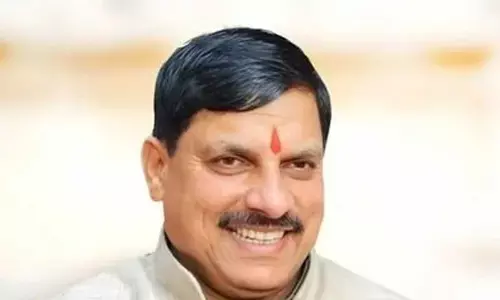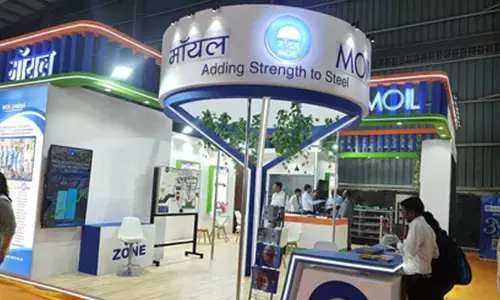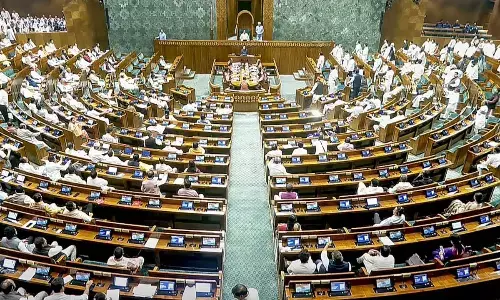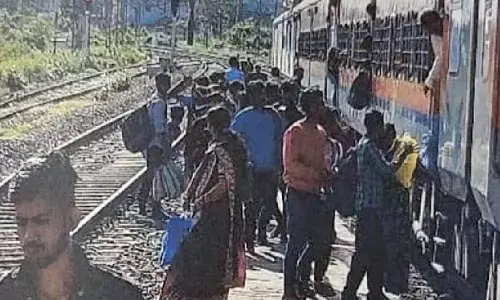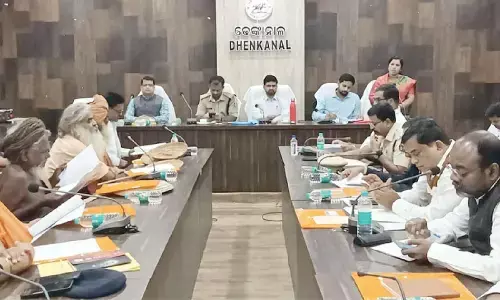Need for lateral entry into Civil Services
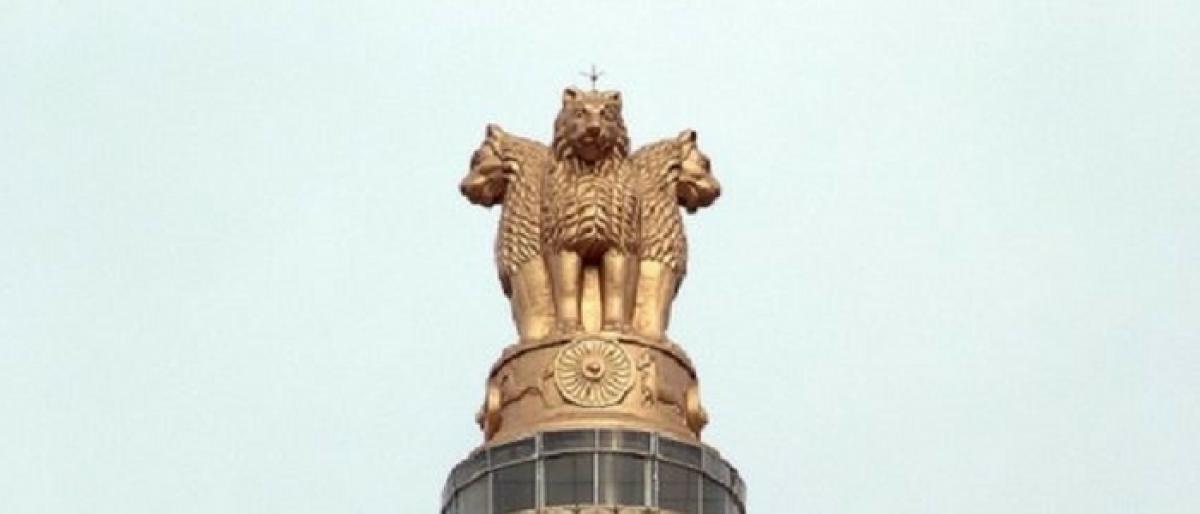
Good governance is basic to all reforms and changes in society. Given the significance of the bureaucracy in India’s development, some of the major changes need to be incorporated in order to improve the bureaucracy’s efficiency and performance.
Good governance is basic to all reforms and changes in society. Given the significance of the bureaucracy in India’s development, some of the major changes need to be incorporated in order to improve the bureaucracy’s efficiency and performance.
With a Committee of Secretaries favouring lateral entry into the civil service, the Department of Personnel & Training (DoPT) has been instructed to put up a proposal on the induction of outsiders in the middle rung of ministries that deal with economy and infrastructure.
Instructions have come from the Prime Minister’s Office to prepare a broad outline of modalities for selecting private individuals for appointment in the ranks of deputy secretary, director and joint secretary. The move was in response to a central government staffing policy paper where the DoPT had indicated a huge shortage of officers in the middle management level.
In 2005, the second Administrative Reforms Commission (ARC) recommended an institutionalized, transparent process for lateral entry at both the Central and state levels.
Issues
- Stagnation in bureaucracy means the civil services as they exist today—most crucially, the Indian Administrative Service (IAS)—are unsuited to the country’s political economy in many ways.
- Many young IAS officers often fall prey to the incompetency of the framework. Once inducted, postings and training seem to turn them into generalists rather than specialists. The training does not appear to focus on domain expertise and the knowledge required by jobs in today’s context.
- However, political interference poses a constant threat to bureaucratic functioning. Historical data suggests there is a 53% chance that an IAS officer is transferred in any given year. As a result, political loyalty rather than professional qualifications often represents an alternative path to success.
- Bureaucracy in India is governed by outmoded personnel procedures.
Changed scenario
A newly independent India had pressing concerns about the need for socioeconomic development, the demands of Central planning and the imperative of holding together a new nation subject to internal political pressures.
- The Constituent Assembly debates make it clear that the civil services were seen as a tool—by Vallabhbhai Patel, for instance—for achieving these objectives.
- Their creation and functioning thus gave rise to a tribe of generalist administrators whose economic effectiveness was sometimes subordinate to other concerns.
- Seven decades later, those dynamics have changed. Some concerns, such as the need for having bureaucrats act as binding agents, no longer exist. Others, such as socioeconomic development, have transmuted to the point where the state’s methods of addressing them are coming in for a rethink.
- And new concerns have arisen, such as the shift from the uniformity of centrally planned economic policy to the diverse demands of competitive federalism. The importance of economic effectiveness has risen concurrently.
Resasons for not allowing lateral entry
- A clash might emerge between those already in services, after going through vigorous training and hardcore competition and those who enter through lateral entry. It will hamper the deliverance of "good governance".
- Partial selections from the private services will jeopardise the purpose of having a lateral entry.
- There is no guarantee that those who succeeded in corporate sectors, will surely succeed in the administration of law and order.
The existing civil service should also need a career oriented growth path free from being transferred by political representatives using "carrot and stick policy" The concept of lateral entry into civil service is good and fits well in contemporary requirements, however, The existing structure also needs an overhauling to remove known stagnation.
India civil services portray all the 10 characteristics of Weberian Ideal bureaucracy. For example hierarchy, a division of power. Reforms are the need of the moment, internal and external, an insulation from pressure from the political executive, lateral entry and more mechanisms to ensure accountability, neutrality and transparency.
Need for lateral entry
- In a 21st century economy, a quarter century after liberalization, that means the need for specialized skills and knowledge to inform policy-making and administration is more important than ever.
- The first ARC had pointed out the need for specialization as far back as in 1965.
- The Surinder Nath Committee and the Hota Committee followed suit in 2003 and 2004, respectively, as did the second ARC.
- While there is a higher chance of junior officers who have acquired specialized knowledge and skills gaining much-prized Central government postings, there is no correlation between the postings and their area of specialization. That correlation comes into existence only at a late-career stage. Political interference and the use of transfers as carrot and stick further complicate the picture, often making it difficult for bureaucrats to stay in a posting long enough to gain relevant expertise. Thus the need for lateral entry.
- Australia, Belgium, New Zealand, the UK, the Netherlands and the US identify specific senior positions that are open to appointments from a wider pool of civil servants as well as private-sector executives with relevant domain experience. Lateral entrants bring their own work culture, and this enables renewal and adaptation in government organisations.
- Lateral entrants could also induce competition within the system. When civil servants are made to compete with outside talent, the lethargic attitude will diminish. So the prospects of lateral entry will always propel overall efficiency.
- Civil servants should also be encouraged to move out and work for different sectors on a short-term basis to enrich their knowledge and enhance their motivation and efficiency. Therefore, lateral exit is as important as lateral entry.
Shortfall in numbers
- There is an overall 20% shortfall of IAS cadre officers alone in 24 state cadres. The Baswan Committee (2016) has shown how large states such as Bihar, Madhya Pradesh and Rajasthan have a deficit of 75 to over 100 officers and their unwillingness to sponsor officers to go to the Centre on deputation is understandable. Lateral induction is, therefore, a small step towards essential housekeeping in central government staffing and ought to be supported.
Target oriented
Outside talent from the private sector is more likely to be target-oriented, which will improve the performance of the government. Also, more competition will encourage career civil servants to develop expertise in areas of their choice.
Improved governance
The conventional wisdom on lateral entry is that it infuses fresh energy and thinking into an insular, complacent and often archaic bureaucracy. It enables the entry of right-minded professionals and the adoption of best practices for improving governance.
Challenges
- Bureaucratic resistance and institutional inertia of the civil services
- Political will civil service reforms will curtail the inordinate control that the politcal masters have at present
- Relevant experience the present system of ‘frequent and arbitrary transfers’ hinder gaining of the relevant experience by incumbent officers
Benefits of lateral entry
It is both a workaround for the civil services’ structural failings and an antidote to the complacency that can set in a career-based service.
The second ARC report points out that it is both possible and desirable to incorporate elements of a position-based system where lateral entry and specialization are common.
Other areas of reform
- The advent of big data provides a natural opportunity to use metrics on officers’ performance in the field to inform promotion and retention decisions. Seniority, after all, is a blunt instrument for deciding who gets promoted and who does not.
- The government should consider the proposal that officers deemed unfit for further service at specified career benchmarks be compulsorily retired through a transparent, uniform system of performance review.
- Third, the government might contemplate allowing IAS officers to work more closely with their home states. Although India’s founders chafed at the prospect that officers be too closely linked with their state of origin for fear of elite capture, this issue could be revisited for further consideration.
- Finally, it is imperative that the Central and state governments institute safeguards to protect against arbitrary, politically motivated transfers and postings of civil servants. Despite judicial prodding, most states have stalled on such moves.
Why this may not be a good idea? Disturbed balance:
- The proposal for lateral entry at senior decision-making levels, besides increasing the disconnect between policymaking and implementation, will also result in inequitable sharing of the benefits and burdens of government service, with permanent civil servants left to bear the burden of “humble” implementation and lateral entrants getting access to “glamorous” policymaking positions, without having roughed it out in remote and rural India in the rough and tumble of Indian democracy.
- While there would certainly be a beeline for lateral entrants to join top policymaking positions, there would be no such great desire to serve the country at the ground level.
Previous experiences:
- While there may be exceptions, the experience of inducting private-sector managers to run public-sector enterprises is not particularly satisfactory. Whiz-kids from the private sector who ran Air India, Indian Airlines and Vayudoot proved to be failures. Clearly, performance is vitally influenced by the enabling environment and the best managerial capability cannot deliver results in an adverse operating environment. A major part of the disillusionment (if any) with civil servants can be attributed to this enabling environment where innovation and risk-taking have been at a heavy discount.
Deters the available talent
- The best talent can be attracted only if there is reasonable assurance of reaching top level managerial positions. This is true for government service as much as the private sector. Any dilution of the potential horizon for growth would discourage competent and motivated people.
- By suggesting a contract-based system for positions of joint secretary and above, the signal would be sent out that only mid-career positions would be within reach in about 15-18 years of service and there would be considerable uncertainty about career progression thereafter. Coupled with unattractive salary scales and non-entitlement to defined pension since 2004, this would become a potent trinity to deter talented persons from aspiring to civil service careers.
Discontent among the government personnel
Large-scale lateral induction would, in fact, amount to a vote of no-confidence in the government personnel management system, rather than in the highly dedicated, motivated and talented officers who have chosen to join the civil services.
Difficulty in assessing performance
The difficulty in measuring performance in government is another obstacle to be reckoned with. It is not easy to assess the performance of a secretary to the government, given the sheer complexity and amorphous nature of the job.
The induction of lateral entrants would not by itself suffice for better performance orientation and enhanced accountability. It would be as difficult to measure the performance of lateral entrants as it would of career civil servants.
Way forward
A good managerial system encourages and nurtures talent from within instead of seeking to induct leadership from outside. Any failure in this matter is primarily a failure of the system to identify and nurture talent at the appropriate stage. For this, the remedy lies not through lateral induction but through more rigorous performance appraisal and improved personnel management.
- In this context, the government could contemplate hiring outside talent to head certain pre-identified mission-mode projects and public-sector entities where private-sector expertise could be invaluable — like in the case of Nandan Nilekani and Aadhaar. Similarly, leadership positions in large infrastructure projects could be filled through open competition between civil servants and market talent.
- The recruitment and service rules for such posts have to be clearly defined and made incentive-compatible, and the processes managed transparently. A credible statutory agency like the Union Public Service Commission or an autonomous agency like the Bank Board Bureau, established to hire heads of public-sector banks, should be entrusted with the responsibility of recruitment.
- All this, coupled with competition among both serving bureaucrats and market participants, would help avoid many of the aforementioned pitfalls associated with general lateral entry. Further, this would be in line with the lateral entry strategy adopted by more developed parliamentary democracies like the UK.
- Such an approach would have to be complemented with liberalised norms that allow civil servants to work outside government — with multilateral agencies, nonprofits and corporations — for short periods. By enabling exposure to market practices and fresh ideas, this, as much as infusing outside talent into government, is likely to help achieve the objectives of lateral entry itself.
Conclusion
India’s civil services need reform. There is little argument about this. Internal reforms—such as insulation from political pressure and career paths linked to specialization—and external reforms such as lateral entry are complementary, addressing the same deficiencies from different angles. In order to bring in the reforms, there are some supporting conditions that are necessary: First, political commitment for the reforms is essential. Second, the involvement of IAS officers in the change process from the very beginning can accelerate the process.
Expected Questions
- The Indian bureaucracy requires urgent reforms. Critically analyze.
- The Prime Minister’s Office has recently instructed DoPT to prepare a proposal for later entry into ministries dealing with economy and infrastructure. Discuss the need of lateral entry and the benefits it may have on the overall administrative system of India.
Syllabus
General Studies 2
Role of civil services in a democracy.
Important aspects of governance, transparency and accountability and institutional and other measures.












